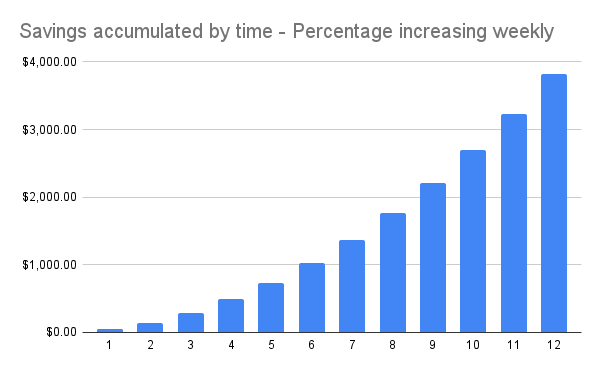How long will it take me to save enough for Baby Step 1?
- Team at LSH
- Nov 24, 2024
- 3 min read

It's finally happened. You've decided to get out of debt for good. You're getting excited to save and start down the path of getting a small emergency fund in place. Based on the 2023 Survey of Household Economics and Decisionmaking (SHED), approximately 10% of all adults "could handle right now using only savings" a large emergency expense of $1,000 - $1,999 (Federal Reserve, 2024). You want to have that $1,000 and be in the 10% of people in the U.S. who can handle an unplanned event like a car breakdown or a plumbing leak, with just savings. Great! This is a good place to be.
Now you wonder, 'How long will it take to save up the first $1,000 for Dave Ramsey's Baby Step 1?' We have 2 approaches for you! The first approach is to increase the weekly amount saved, as highlighted in 'Can't save a dime?'. Or you could save 10% of your bi-weekly paycheck, like in 'Becoming a smiley saver'. Which is faster though? Here is a comparison between the 2 approaches.
For both approaches, we'll use the same bi-weekly income of $2,450 (net income of $4,900/month). The interest earned in the savings account is not added to the cumulative saved, as it is likely to be small in the examples. The approaches and examples are provided for illustration and educational purposes only.
Bi-weekly income - Take home pay ($) | Net Income ($/mth) |
$2,450.00 | $4,900.00 |
In approach 1, if you're progressively increasing your savings from 1% of your monthly net income e.g., $49 in week 1, and $98 in week 2 (by saving 2% of your monthly income), by week 6 you would have crossed the $1,000 goal. If desired, you would have $29 to allocate for debt paydown (like a credit card), and the $1,000 saved to hit 'Baby Step 1'. You could simply keep the extra in the small emergency fund.
Week | Percentage allocated to saving (%) | Amount to save from budget per week ($) | Cumulative saved ($) |
1 | 1% | $49.00 | $49.00 |
2 | 2% | $98.00 | $147.00 |
3 | 3% | $147.00 | $294.00 |
4 | 4% | $196.00 | $490.00 |
5 | 5% | $245.00 | $735.00 |
6 | 6% | $294.00 | $1,029.00 |

In approach 2, where you are saving 10% of your bi-weekly paycheck (i.e., 10% every time you get paid), or $245/paycheck, by week 10 you would have crossed the $1,000 goal. In this example, you could just add $20 more in week 8 and have an even $1,000 saved. Or by week 10 you would have $1,225 saved. You would have $225 for debt paydown (like a credit card), and the $1,000 saved to hit 'Baby Step 1'.
Week | Savings % per paycheck | Amount saved per paycheck ($) | Cumulative saved for Baby Step 1 ($) |
1 | 0% | $0.00 | $0.00 |
2 | 10% | $245.00 | $245.00 |
3 | 0% | $0.00 | $245.00 |
4 | 10% | $245.00 | $490.00 |
5 | 0% | $0.00 | $490.00 |
6 | 10% | $245.00 | $735.00 |
7 | 0% | $0.00 | $735.00 |
8 | 10% | $245.00 | $980.00 |
9 | 0% | $0.00 | $980.00 |
10 | 10% | $245.00 | $1,225.00 |

Based on the $4,900/month net income, if you can save progressively more per week, you would get to $1,000 in 6 weeks instead of 10. Taking approach 1, mainly depends if you can increase the intensity of your savings every week over time. So in this case it would be faster by progressively saving more per week than the 10%. Either approach will get you there. If your bi-weekly income is $5,000 (or $10,000 per month), both approaches take 4 weeks to get to $1,000 saved for the starter emergency fund.
To answer the question (How long will it take me to save enough for Baby Step 1?), it depends on your situation and how much you can save. Realistically, in a few months, you can have $1,000 (or a little more) saved in a starter emergency fund. It is doable! The habit of saving and consistently applying it can get you there.
To your success.






Comments